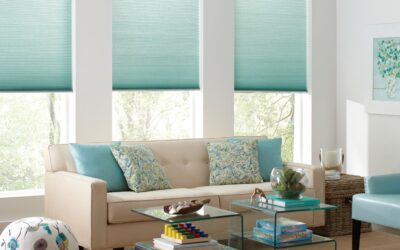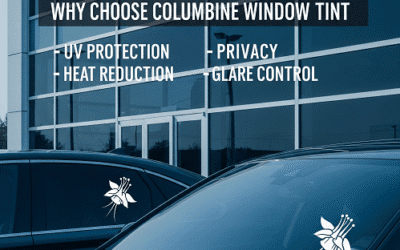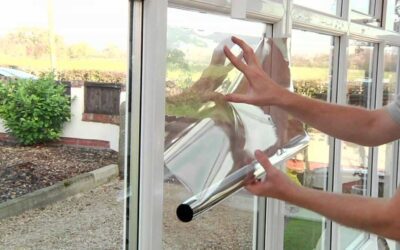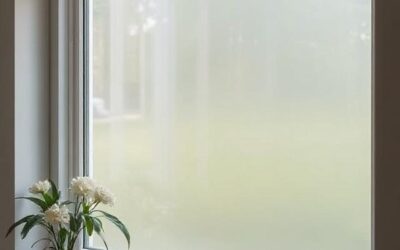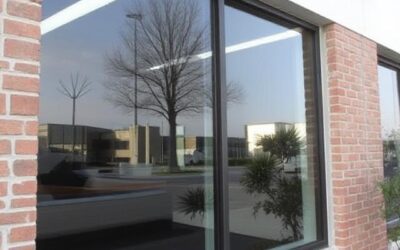Why do people tint their windows in their home or office: 6 Reasons?
There are many reasons why people tint their windows on a home or business. They can increase comfort by leveling out the temperature between rooms; often, the interior spaces in a house or building are too cold while the perimeter areas are too hot. Customers can reduce the cost of cooling by running the air conditioner less, allowing them to save money and be “greener” with energy efficiency. There are medical reasons to have tinted windows, including blocking the harmful ultraviolet rays from the sun and protecting the eyes by making the light less intense.

We commonly hear six reasons our customers choose window film as their best solution: heat reduction, fading protection, privacy, glare reduction, added safety and security, and protection against graffiti.
1. Heat Reduction
Windows are one of the main points of entry for heat into your home or building. People often think of tinted windows for their cars to keep them cool, but it is also a great reason to look at house window tinting or window film on your office windows. Compared to vehicle window tint, residential and commercial window film can often block even more heat from entering your home or office because they use metals to reflect the heat better.
When running the air conditioner constantly to fight the heat entering thru your windows, the interior rooms become cold, and the perimeter rooms are too hot, unable to keep up with the heat entering through your windows. With house window tinting, you can slow the heat entering your home and let your air conditioner run less, evening out the heat between the interior and perimeter rooms. You will save money, feel more comfortable, and be more environmentally conscious at the same time.
While getting tinted windows to reduce heat, you can benefit in other ways, including protection against fading, added privacy, and glare reduction; the following three reasons for window film from our list.
2. Fading protection
We will have customers request window tint to protect against fading on both homes (for furniture, floors, art) and businesses (for merchandise). In both cases, window films are a great way to help significantly reduce the leading causes of fading.
Most window films block over 99% of the sun’s damaging ultraviolet rays (UV), acting as a sunscreen for your windows. Often customers will think that blocking these UV rays solves their fading problem completely. While the UV rays are the leading cause of fading, 40% of the issue, there are others. Heat accounts for 25% of the cause of fading, light for 25%, and 10% caused by other factors that we can’t control.
While, in most cases, it is difficult to entirely reduce the 50% combined cause of fading from light and heat, window film can block a majority of both, further protecting your valuables from damage from sunlight. The darker a film you choose when looking into tinted windows and the more heat it blocks, the better protection you will receive against fading.
3. Privacy Window Tinting
Privacy window tinting is a prevalent request for both office and house window tint film. There are two types of privacy window films available. One type provides total privacy; the other is considered a one-way window film.
One of the main differences between the two types of privacy window films is how they work at night or in areas where the amount of light between the rooms varies greatly. During the day, you might have a mirrored window tint that people can’t see through from outside, but at night, when it is dark outside and light inside, people can see right in. You can see pictures of large commercial buildings in a city during the day, and you may only see the reflection from the shiny windows. When you look at the same building in a photo at night, you can see directly into the building.
There are rooms, like bathrooms, where you want privacy both during the day and at night. For these windows, you want a window film that provides total privacy; you can never see through them. These films include many frosted window films, patterned films, black-out or white-out films, and more. With frost films, you can often still get a lot of natural light from your windows while keeping people from seeing through them. Other locations where frost and patterned window films are most often used are conference rooms, storerooms, mother’s rooms, etc.
There are also many instances where customers want daytime or one-way privacy. With house tinting, customers often try to keep neighbors from being able to look directly into their homes while they can still see out. House window tinting allows you to open the blinds, let more light in and see the beautiful views while maintaining your privacy. These are also common in commercial applications such as between a manager’s office and the storefront. Usually, these films have a reflective, mirrored look to them.
4. Glare Reduction
Reducing glare is an excellent benefit of window film on both homes and buildings. Anytime we go outside, we wear sunglasses to protect our eyes and reduce the intensity of the light. With so many windows, sunlight can be just as intense while inside as when outside. Instead of wearing sunglasses indoors, you can try using house window tinting to reduce the intensity of the light. Window film is like sunglasses for your home or office.
5. Safety and Security Window Films
With smash-and-grab thefts increasing and the craziness of today’s world, safety and security window films are becoming more popular. Safety and security window films are a great, cost-effective way to make it more difficult for someone to use your windows to break in or to increase safety by holding the glass together if broken.
Windows are one of the top entry points when someone is trying to break into your home or business. It is easy for someone to break the glass and unlock your doors or walk right in where the window used to be. With a thicker security window film, you can hold the glass together when broken and keep it from quickly falling out of the frame. Security tint gives you extra time to respond to the break-in attempt, allow the police to arrive, or discourage intruders from trying to get in.
Sometimes glass can break for other reasons, including intense weather or accidents, such as a baseball hitting the glass. Whatever the cause, it is dangerous when broken glass scatters. It can cut you, loved ones, or customers. Also, when broken, the glass falls out of the window frame, leaving an opening in your home or building where the elements can enter. It can require you to board up the area while waiting for new glass to arrive. With safety window tint, you can safely keep the sharp broken glass in place, protecting people, keeping the weather outside, and allowing time for new glass to arrive.
6. Anti-graffiti Window Films
As graffiti seems to be happening more commonly, glass is becoming one of the main mediums for “taggers” to leave their mark. Typically, graffiti on glass is either carved in with something sharp or painted on with acid-based paint that etches into the glass. With anti-graffiti commercial window film, you can protect your glass from graffiti. Graffiti films become a much less expensive sacrificial layer that can easily be replaced, compared to the more expensive cost of replacing the glass.
When the acid-based paint is used, once you clean the paint off the glass, the pattern is still visible on the window as it has etched its way permanently into the glass. When glass is protected by anti-graffiti window film, acid-based paint usually cleans off without noticeably damaging the film.
Conclusion
Whatever problem with windows that you are looking to solve, window tint films can be a great cost-effective solution for you. Customers increasingly recognize both house window tinting and commercial window tinting as more necessary than automotive window tinting. why do people tint their windows? As we have shown above, the reasons are clear.
